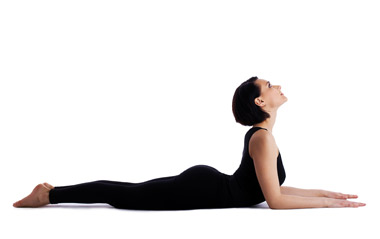Salamba Bhujangasana – Sphinx Pose
Introduction:
Salamba Bhujangasana is derived from the combination of the Sanskrit words Salamba(Supported), Bhujang(Cobra), and asana (posture or pose). It is called as Sphinx Posein English.
Preparatory pose for Salamba Bhujangasana (Sphinx pose) is Phalakasana; and the follow-up poses are Setubandha-sarvangasana and Viparita Shalabhasana (Superman pose).
Salamba Bhujangasana is a simplest variation of the pose Bhujangasana. Beginners can practise this pose easily. It helps to reduce the lower back ache.
Steps Involved:
- Start with lie on the yoga mat, on your belly.
- Make sure that your forearms should flat on the yoga mat.
- Place the elbows under the shoulders.
- Keeps the legs together.
- Place the chin on the yoga mat.
- Inhale; slowly lift the chest and head off of the yoga mat by pressing the forearms down into the floor.
- Make sure that your neck in line with your spine.
- Now try to pull up the knee caps.
- Carefully squeeze the thighs and buttocks.
- Gently press the pubic bone down to the yoga mat.
- Keep your elbows close to the sides.
- Note: You can use your arms to lift up higher.
- Slowly drop the back and shoulders down.
- Try to press the chest forward.
- Chin up and look straight.
- Breathing should be normal.
- Hold in this position for few seconds (20 to 60 seconds).
- Exit the pose by exhale and slowly lower the head and chest on the yoga mat.
Benefits:
- Strengthens the spine, vertebral column and the core body.
- Stimulates the abdominal organs.
- Relieves the body stress.
- Expands the shoulders and chest.
- Helps to align the spine.
- Improves the functions of the nervous system and kidneys.
- Stretches the Thorax, Abdomen, Shoulder and Lung.
- This pose helps to improve the blood circulation.
- Opens the chest.
Dos, Don’ts and Tips:
People with the following problem please avoid practising this pose, or practise under the expert’s supervisions and doctor’s advice.
- Back Injury
- Shoulder problems
- Fractured wrists or ribs
- Arm Injury
- Chronic knee
- Recently abdominal surgery
- Pregnant women
Practise this yoga daily, will yield the better results.
It’s good to do this pose in the morning with empty stomach.
Do not rush. If you find any pain or discomfort, exit the pose, and ask for the expert’s guidance and doctor’s advice.

